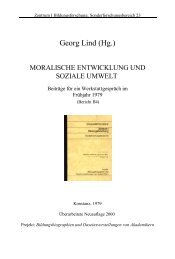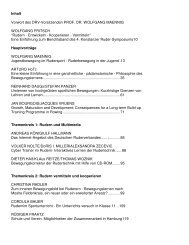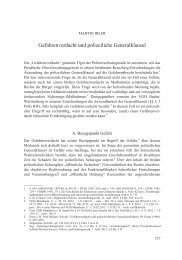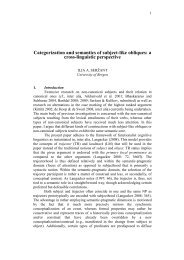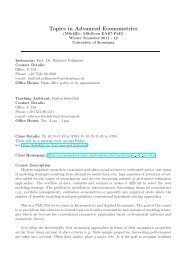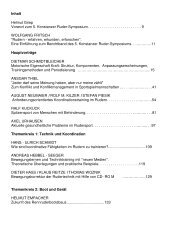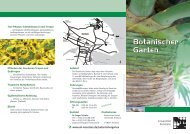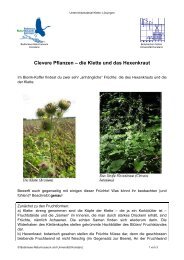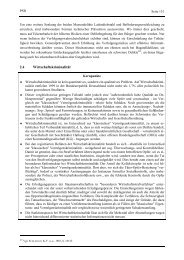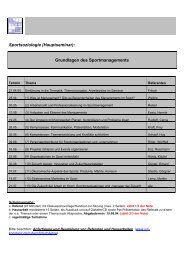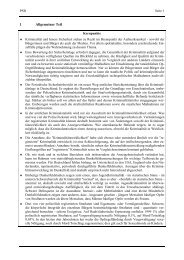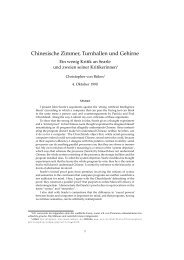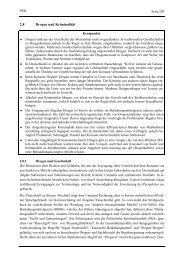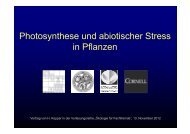Book of Abstracts Book of Abstracts - Universität Konstanz
Book of Abstracts Book of Abstracts - Universität Konstanz
Book of Abstracts Book of Abstracts - Universität Konstanz
Create successful ePaper yourself
Turn your PDF publications into a flip-book with our unique Google optimized e-Paper software.
A - 19<br />
126<br />
Phase Changes in Clusters: Targets for Experiments<br />
R. Stephen Berry 1 , and Ana Proykova 2<br />
1 Department <strong>of</strong> Chemistry and The James Franck Institute, The University <strong>of</strong> Chicago, Chicago,<br />
Illinois 60637, USA<br />
2 University <strong>of</strong> S<strong>of</strong>ia, Faculty <strong>of</strong> Physics, 5 James Bourchier Blvd, S<strong>of</strong>ia 1126, Bulgaria<br />
It is now well established that some clusters exhibit the finite-system counterparts <strong>of</strong> firstorder<br />
transitions, and that these differ from bulk phase transitions ins<strong>of</strong>ar as clusters may exist<br />
in two or more phases in observable amounts, in thermal equilibrium. It is also apparent from<br />
simulations that bulk second-order transitions may have small-system analogues that have either<br />
one or two local free-energy minima, corresponding to second-order-like or first-order-like<br />
behavior. These findings raise several questions that await experimental study. One is the<br />
observation <strong>of</strong> sharp upper or (more likely) lower temperature bounds for the local stability <strong>of</strong><br />
the unfavored phase. A second is the possibility <strong>of</strong> observing and distinguishing between cases<br />
in which phases persist long enough to exhibit well-defined, measurable characteristics and<br />
cases in which the dynamic equilibrium between the phases is so labile that no well-defined<br />
distinguishable phases can be observed. Still a third challenge is the possibility <strong>of</strong> observing<br />
phase changes or phase coexistence that look first-order-like in small clusters but become<br />
second-order in the large-system limit. With this challenge is the alternative <strong>of</strong> true secondorder-like<br />
behavior in which multiple phases do not coexist because the free energy has only a<br />
single minimum. All <strong>of</strong> these are experimental investigations that will almost certainly require<br />
monodisperse cluster samples, because the phase behavior <strong>of</strong> small clusters is highly variable<br />
and not at all monotonic with cluster size.



